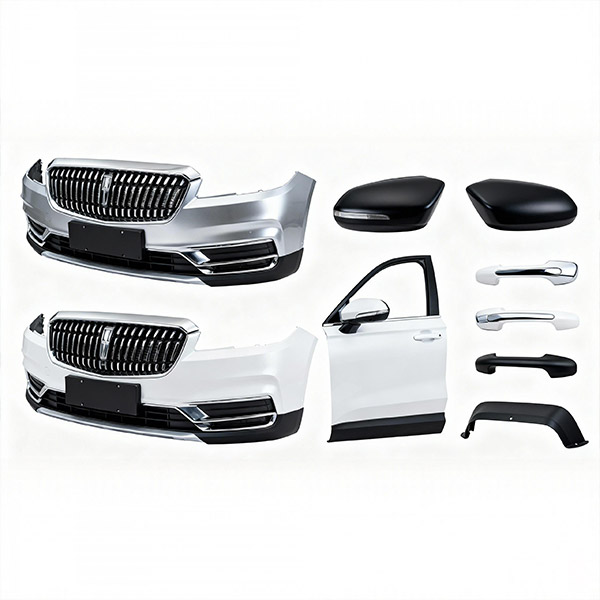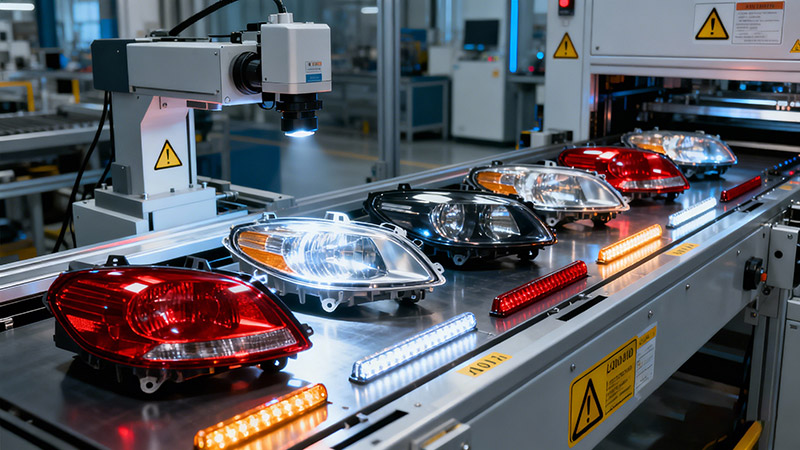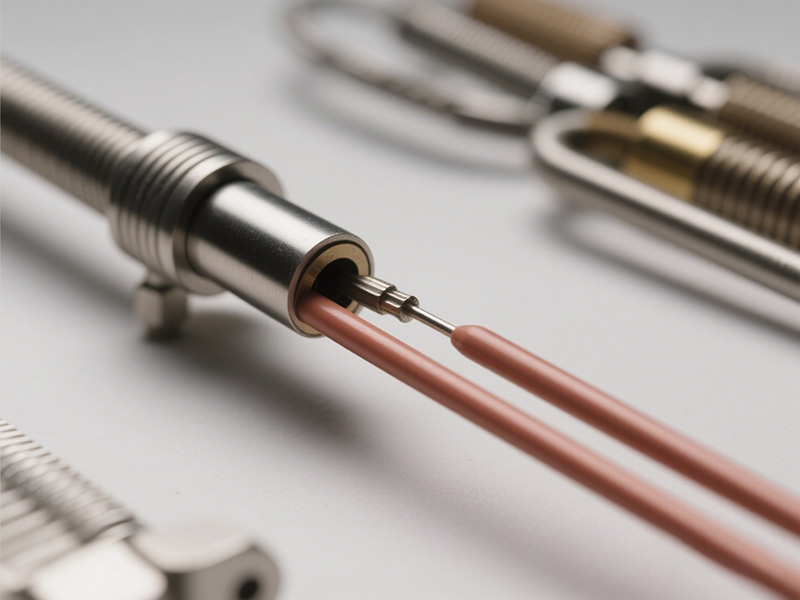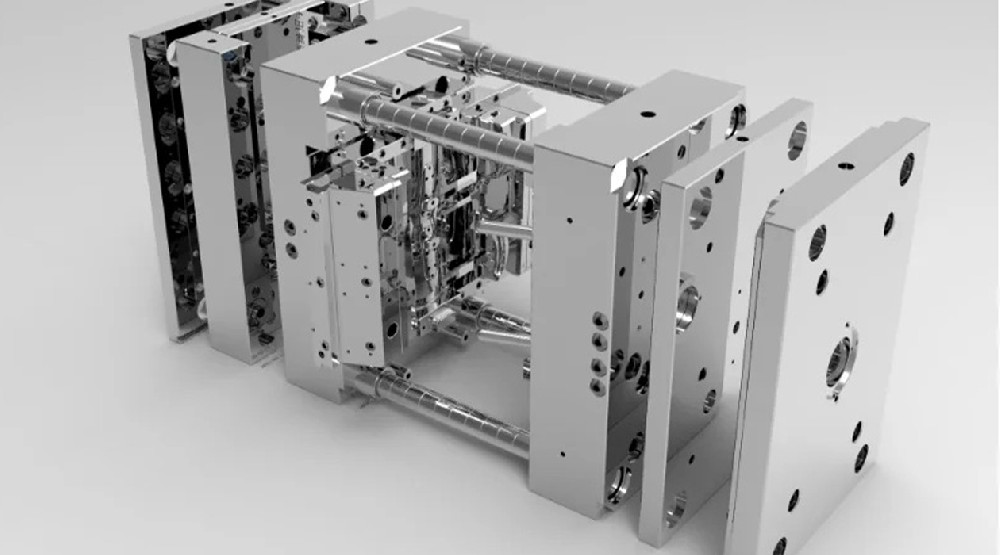Choosing the right material is one of the most critical steps in automotive plastic injection ...
Hot Runner Cables: Role, Types, and Specifications

Role and Function: Hot runner cables connect the temperature controller or mainframe to the mold’s heaters and thermocouples. Power (heater) cables carry AC power from the controller to the hot runner’s cartridge heaters, supplying up to 15 A per zone (special high-power cables can handle 30 A for fewer zones). Thermocouple cables carry the temperature signal from each zone’s thermocouple back to the controller. In practice, all hot-runner cables are built as multi-conductor assemblies with industry-standard connectors. For example, DME notes that its power cables “allow quick connection to all heaters” in 5, 8, or 12 zone molds (15 A, 10–30 ft lengths), while its thermocouple cables (also 5/8/12 zones, 10–30 ft) “carry temperature signal… back to the controller”. Such cables are factory-tested for continuity and labeled for mold end vs. controller end connections to ensure reliable operation. In short, hot-runner cables are the crucial wiring that powers the mold’s heaters and feeds its temperature feedback into the controller.
Types of Hot Runner Cables
Power (heater) cables: These multi-conductor cables feed AC power to the mold’s heater circuits. They are typically rated for 15 A per zone and come wired in bundles for 5-, 8-, or 12-zone molds. (Special versions for 3- or 5-zone, 30 A service are also available for very high-power molds.) Power cables use durable insulated wire and heavy-duty molded connectors on each end (e.g., 16-pin, 24-pin Amphenol/Harting, DME 25pin Mate n Lok, etc., depending on controller brand).
Thermocouple (TC) cables: These carry the low-level temperature signals from the mold’s thermocouples to the controller. They are also multi-conductor (one conductor per zone) and wired in 5/8/12-zone bundles. Thermocouple cables use the same style of connector housings as power cables but contain temperature-rated wire (usually Type J or K) twisted in pairs or shielded runs. Each TC cable is labeled and color-coded (e.g., controller vs. mold end, black jacket for power, gray for TC) to avoid confusion.
·
·
Combination (power+TC) cables: Some systems use “combination” or Y-cables that bundle both heater and thermocouple conductors in a single assembly. These split at the mold end, often using one connector shell for power pins and a mating shell for TC pins. For example, Nickerson PMS offers combination cables (5 pin for 1–2 zones, 16-pin for 4–8 zones, 24-pin for 10–12 zones) that effectively pair two connectors to serve multiple zones. Allied Instrumentation describes “Y” cables that combine power and TC signals for certain brands (Husky, Mold-Masters, Gammaflux, etc.) using special fittings.
Accessories and adapters: In practice, shops also use 90° TC cables (with right-angle hood for tight cavities), split/stacker cables for multi-shot molds, and short adaptor/pigtail cables to match non-mating connectors. Many suppliers (e.g., Plastixs/Powertech, PCS Company, Heaters & Sensors) stock a range of cables, adapters, and repair kits to fit all major connector styles and pinouts.
Key Specifications and Considerations
Temperature rating: Hot-runner cables must withstand the mold’s high temperatures and ambient heat. Glass-fiber/silicone-insulated cables are common: e.g. Hotset’s “GLS” power cables use pure nickel conductors with double glass braid and silicone varnish, rated up to 320 °C. Typical wire insulation materials and their temperature limits (from manufacturers’ data) are: PTFE (–100 to +260 °C), silicone rubber (–40 to +180 °C), polyimide/Kapton (–267 to +310 °C), FEP (–80 to +200 °C). In practice, hot-runner cables are usually rated for at least 200–250 °C continuous service. UL/CSA certifications (e.g. UL-Style 5167 for 250 °C cables) are often used.
Conductor and insulation: Cables use fine-stranded copper or nickel-plated copper conductors for flexibility. High strand-count (e.g., 37-strand 16 AWG as in Hotset’s data) ensures durability under millions of flex cycles. (Solid conductors are avoided because they break under vibration and flexing.) Insulation is typically glass-fiber braid impregnated with silicone resin or PTFE tape, providing abrasion resistance and electrical insulation at high temperatures. Many cables also include a stainless-steel or tinned copper braid shield to ground noise and improve durability.
Current and voltage: Standard hot-runner power cables are rated for 15 A per zone at up to ~250–300 VAC (Hotset gives nominal 480 V, test 1500 V for its 4 mm² GLS cable). DME notes standard power cables are 15 A (wired 5/8/12 zones), with higher-current (30 A) cables for 3/5 zones available. Thermocouple wires are low-current and carry milliamp-level signals, but require low-noise shielding.
Connector types: Connectors are heavy-duty multi-pin shells. Common styles include Amp Mate-N-Lok (25 pin DME standard), HARTING/HBSeries (16/24/48-pin), and EPIC series by HARTING (20- to 48-pin metal inserts). Suppliers like Plastixs and Allied supply cables with EPIC-compatible inserts for Athena/DME/Gammaflux systems. Husky and Mold-Masters commonly use 48-pin and 32-pin Harting connectors. Connectors may be single- or double-latch locking, and often include strain-relief boots. Cables and connectors are keyed by manufacturer: e.g. Powertech (Plastixs) uses their “Titan” connector in EPIC shells to prevent pin push-out.
Physical construction: Hot-runner cables are usually jacketed (silicone or PVC) and often bundled in a protective conduit. They must be highly flexible: AceTronic notes that 100% stranded construction is essential to survive repeated mold moves. Minimum bend radii are typically ~6× the cable’s outer diameter (Hotset recommends 6×OD). Color coding or labels distinguish power vs. TC (Plastixs color-codes power jackets black and TC gray) and indicate controller vs. mold end.
Durability: Hot-runner cables must resist abrasion, oil, and repeated flexing. High-quality cables use silicone-glass insulation and compression-strain relief glands. Cheaper “extension-cord” style cables are unreliable; as AceTronic warns, low-grade bundled cables will break under molding stresses. Instead, premium cables use individual wires in a woven or coiled wrap inside a robust outer jacket and metal connector hoods.
Manufacturers and Products (Examples)
DME (Milacron): A major OEM of hot-runner controllers and connectors. DME sells its own heavy-gauge power and TC cables wired for 5/8/12 zones at 15 A (and 3/5-zone 30 A cables). DME cables use molded hoods for quick connection to their “Smart” controller input, and are stocked in 10, 20, and 30 ft lengths.
Fast Heat (Spark Industries): A U.S. hot-runner supplier. They offer DME and *Husky-*style replacement cables. For example, a 12-zone 20 ft heater cable (DME standard) is listed at ~$458, and the matching 12-zone TC cable at $466. Fast Heat’s own “Husky style” 12-zone heater cable is about $432.
Nickerson PMS: A UK supplier of hot-runner cables. They sell raw multi-core wiring (e.g., 10 m drum of 15 A thermocouple twin cable for ~£18) as well as assembled cables. For instance, an 8-zone (16-pin) 20 ft thermocouple cable is ~£180, and an 8-zone power cable is ~£150. (These cover Mold-Masters/Hydra-style systems.) Nickerson also sells combination and adapter cables for popular controllers.
Allied Instrumentation: A U.S. cable manufacturer. They specialize in custom hot-runner cable assemblies. Allied produces EPIC-style cables for all major controllers (Athena, DME, Fast Heat, Gammaflux, Husky, Incoe, etc.), as well as 48-pin HARTING cables, “Y” cables, adapter cables, and Amphenol-heavy-duty assemblies. All Allied cables use 100% stranded wire and are clearly marked by the mold/controller end.
AceTronic Industrial: A U.S. cabling specialist. AceTronic highlights 100% stranded wire, machined/retained connector pins, and secure strain-relief glands as quality features. They offer custom hot-runner cables built with premium parts (LAPP wire, EPIC/Harting connectors) for maximum durability.
Plastixs / Powertech: A distributor in North America. Powertech® cables use EPIC “Titan” connectors to avoid pin-push-out. They stock standard DME, Mold-Masters, and EPIC-style cables (5/8/12 zones, 10–20 ft) and special options like stack-mold and Y-cables. (See Plastix's spec sheet for their model codes.)
Heaters & Sensors (Heater&Sensor, Canada): A Canadian supplier. Their product info states cables are heavy-gauge, oil- and tear-resistant, and use stranded wire. They stock DME-style 5/8/12-zone cables in 10 and 20 ft lengths.
Other notable names include Mold-Masters, Incoe (Milacron brands), and Hasco (European), which provide full hot-runner systems and often supply matching harnesses or refer OEM cables. Connector manufacturers like HARTING (EPIC) and Amphenol design the multi-pin connectors used; for example, Husky’s controllers use rugged HARTING inserts for all power, signal, and TC connections.
| Example Cable | Specs | Length | Price (20 ft) |
| DME 12-zone Heater Cable (15 A) | 12 zones, Amp/EPIC connectors | 20 ft | $457.85 |
| Fast Heat 12-zone Heater Cable (15 A) | 12 zones, 16-pin HBE/Husky hood | 20 ft | $431.86 |
| DME 12-zone Thermocouple Cable | 12 zones, Type J, Amp connectors | 20 ft | $466.42 |
| Nickerson 8-zone Thermocouple Cable | 8 zones, 16-pin connector | 20 ft | £180.56 (≈$224) |
| Nickerson 8-zone Power Cable | 8 zones, 16-pin connector, 15 A | 20 ft | £150.46 (≈$186) |
Standards and Best Practices
Installation: Follow the manufacturer's guidelines on bend radius and strain relief. Use the proper gasket or PG style gland at the mold interface to secure the cable and prevent abrasion. Route cables away from sharp edges and moving parts. Ideally, keep hot-runner cables separate from high-voltage or noisy cables: shielded cables should not run parallel to power lines. All connectors must latch/lock fully to avoid pin push-out under vibration. Label each cable with zone counts and ends (mold vs. controller) to avoid confusion.
Maintenance: Regularly inspect cables and connections. Check for broken strands, chafed insulation, or loose connectors. Use a megohmmeter or specialized tester (e.g. “CableXChecker”) to verify each heater and TC circuit before production. Hot runner cables are abused during mold setup, so inspect them at least annually. Clean dust/grease off connectors and ensure pins are corrosion-free. Replace any cable that shows wear – do not run damaged wires.
Safety: Always disconnect power before working on cables or connectors. Ground the controller and cables properly to prevent shocks. Use PPE (insulated gloves, safety glasses) when handling live equipment. Ensure the shop’s earth ground is good; inadequate grounding can cause erratic controller readings or unsafe conditions. Only use cables rated and certified for your environment: e.g. UL/CSA approvals for high-temperature operation. Follow all relevant electrical codes (NEC, CE marking in Europe, etc.) when routing and grounding hot-runner wiring.
Connector Care: Verify each pin is fully seated in its hood. Secure the hood’s retaining screws. For reused molds, clean the connector inserts and apply contact lubricant if needed. Avoid twisting or pulling on cables; support heavy cables so strain isn’t on the connector pins.
·
Pricing and Availability
Hot-runner cables are custom-made products, so pricing varies by length, zone count, and connector type. As a rough guide, factory 12 zone, 20 ft cables cost $400–$500 (U.S.) each. For example, a 20 ft 12 zone DME heater cable is about $458, and a matching 12 zone TC cable is about $466. Shorter or lower-zone cables cost less (an 8 zone TC cable ~$333, a 5 zone TC ~$264). Small-quantity custom cables generally ship in a few days to weeks, depending on supplier.
Standard wire for these cables (UL 5167 or UL 5347 hook-up wire) can be bought by the spool from electrical distributors. Cartridge-connector hoods (Amphenol/Harting inserts) and backshells are available from suppliers like Harting, TE/AMP, or Plastixs. Many OEMs bundle cables with their controllers (cable length may be included in the controller price), but spares and replacements are sold through hot-runner distributors.





